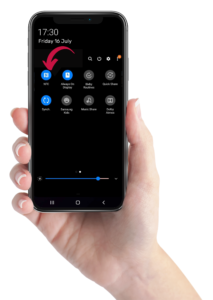What Do you Do if you Find a Lost Pet?
If you find a lost pet, there are a number of steps you should take to try and reunite the animal with its owner. These steps include:
Check for Identification
First, check to see whether the animal has a form of identification, such as a rabies tag. If the dog is willing, check for a tattoo either in the ear on the inside of the upper thigh.
Scan for a Microchip
If no identification is found, take the dog to a veterinarian’s office who will scan it for a microchip at no charge. If a chip is found, a microchip lookup will be performed in a registry database to find the owner’s contact information.
Post Photos on Social Media
Take photos of the pet you have found (the higher the quality the better) and post them on social media, asking your friends to share the post. In your post include information such as where the pet was found, a complete description of the animal, and how the owner can contact you.
Contact Local Animal Rescues/Shelters
Animal rescues and shelters are typically the first places pet owners look for lost animals. Be sure to file a found pet report with any animal groups in your area.
Ask for Proof of Ownership
Finally, if the owner is found, ask for proof of ownership. Examples include vet records, photos of the animal, or information obtained from a microchip lookup. It’s important to do your due diligence since thieves and dog flippers can target animal finders.
Benefits of Microchipping your Pet
There are many benefits to microchipping your pet. The most important reasons to consider microchipping include:
Identification is Never Lost
Unlike a collar with tags, a microchip can never be separated from your dog.
Humane
Another form of permanent identification for dogs is tattoos. Although tattooing can be performed under anesthesia, many dogs are tattooed while they are awake. Drawbacks of tattoos are pain, noise, and procedure duration. On the other hand, the microchipping procedure is quick, quiet, and relatively painless.
Improves Chances of being Reunited

Dogs that are microchipped have an improved chance of being reunited with their owners, as every additional form of identification is useful. Even pets that have been missing for years have been reunited with their owners thanks to microchips.
Proves Identity if Dog is Stolen
If a dog is stolen, there is little a pet parent can do to prove ownership definitively. A microchip, however, provides this proof. Additionally, pet thieves often sell dogs for profit. As a rule of thumb, many veterinarians check for microchips when a pet owner brings in a pet for the first time. In this way, many animals have been reunited with their rightful owners.
Never Needs to be Replaced
A microchip is permanent and is designed to last the entirety of a dog’s life. While dog owners should have a pet’s microchip checked periodically for peace of mind at annual vet appointments, it is rare for a microchip to ever stop working.
Is Microchipping Painful?
Microchipping is a great way to ensure your dog can always be identified if lost or stolen. However, some pet parents worry about the potential for pain. Here, whether microchipping is painful will be discussed.
How is a dog Microchipped?
The microchip, which is approximately the size of a grain of rice, is injected under the dog’s skin via a needle with a special syringe. A veterinarian will pinch the loose skin near the dog’s shoulder blades and then insert the needle beneath the skin before depressing the syringe to inject the microchip. Once the microchip is beneath the skin it cannot be felt by either the dog or a human.
Is Microchipping Painful?
Microchipping feels no different to the dog than being vaccinated or having blood drawn. In fact, microchipping is potentially less painful since the needle is only inserted beneath the skin and not into a vein or muscle like blood draws and vaccinations. For pet owners who are worried about the potential of pain, a local anesthetic may be used. Additionally, microchipping can be performed while a dog is already under anesthesia, such as during a spay or neuter surgery.
What Age Can You Microchip a Puppy?
Many veterinarians recommend waiting until a dog is 8 weeks of age or older before microchipping. In some areas of the world, like the United Kingdom, it is mandatory for puppies to be microchipped when they are sold, typically when they are 8 weeks old.
How to Register my Pet’s Microchip
The microchipping process is not complete until a microchip is registered. Here, common questions about registering a pet’s microchip are answered.
Is Microchipping the Same as Registrering?
Contrary to popular belief, microchipping is not complete until your dog’s microchip has been registered. Your pet’s microchip contains a code that is unique to your pet. When the microchip is scanned, the pet’s ID number is cross-referenced with a pet microchip registration database to find the owner’s contact information. Without registration, the information obtained from the microchip is useless.
How Do I Register my Dog’s Microchip?
To register your dog’s microchip you first must know the 10- or 15-digit code assigned to your pet. Next, contact the microchip company via telephone or through their online portal to link your contact information with the microchip number.
Where is my Information Stored?
Your contact information is stored in a pet microchip registration database. When the microchip is scanned, only the identification number is shown. The person who scanned the microchip then searches the database to find the matching ID number. From there, a representative from the microchip company will provide contact information.
I Don’t Know if my Pet’s Microchip is Registered: What to Do
If you are unsure whether you registered your pet’s microchip, ask your veterinarian to scan your pet and verify your information. Alternatively, the veterinarian can provide the unique identification code associated with the chip, as well as the chip manufacturer. You can then contact the manufacturer and check that the chip has been registered.
What Happens After 3 Months
Lost Pet Profile Free of Charge
Losing a pet is a heart-wrenching experience for every dog parent. Fast and efficient sharing of information about a lost pet is the key to success. Therefore we have created tools to help all pet owners in their search for lost pets. Our database is open and free for everyone, no matter if they are our members or not.
Registration of a lost pet profile together with its full functionality is entirely free for three months. After this time, you will receive an email asking if you are interested in switching to paid registration or if we can cancel your account. You do not even have to reply to the email, and if you are not interested, the account will be automatically canceled free of charge.
A detailed description, including all identification marks, chips, and photos, is the key to success, as well as the fast reporting of a lost pet. If your pet goes missing, click the checkbox in their profile, and the lost pet report will be automatically created in the ScanMy.Name database.
When you need us, we're here to give you a helping paw. You do not risk anything: no credit card required, no obligations. The three-month membership is entirely on us.
Our priority is to help pet parents reunite with their missing four-legged friends.
Pet Doesn’t Have a Chip
If you have tried all the steps mentioned in the article "How to check the chip No." and did not find any identifier, take the dog to a veterinarian's office, which will scan it for a microchip at no charge. In rare cases, the microchip may migrate around the body, so it is essential to scan the dog's entire body – not just the shoulders or left side of the neck.
You can add various identifiers, not just the microchip No. In the ScanMy.Name lost pet registry.
Identifiers you can use to fill out the found dog report include:
- Microchip number
- ScanMy.Name ID tag number
- Tattoo number
- ID tag number
- Municipal tag number
- Rabies tag number
If the pet has no identification mark or microchip, register it anyway, but add a more detailed description of the pet to be easily identified.
What information should you add if the animal has no chip or ID tag:
- Upload several pictures that are taken in good light and from several sides of the pet
- Describe the pet in detail, including the information about approximate age, type of coat, etc.
- Mention any special physical features - e.g., scar, unusual coloration, paw color, and character traits - e.g., the animal tends to children, is afraid of loud noises, is friendly to other animals or people, etc.
- Leave the chip insert box blank
- Fill in the circumstances and location of the finding
How do I find the chip number?
Where and how to look for a chip and its number
A microchip is a tiny capsule about the size of a rice grain containing a chip that carries an identification number unique to your dog. It is applied between your dog's shoulder blades. The chip is tiny and difficult to feel. Occasionally you can feel the chip in smaller breeds of dogs. If the dog is willing and does not resist touching, try to gently massage the left part of his neck between the shoulder blades and feel for a small rod-shaped object. The most reliable way to find a chip is to take the pet to a vet to scan the dog to see if it is microchipped. Shelters, police, and some breeders also have special chip scanners. If the found pet has a tag on its collar with a request to scan, it is unnecessary to take it to a veterinarian. Your mobile phone will suffice.
The chip under the skin - microchip
The chip is a small electronic component about the size of a rice grain that contains an identification number unique to your dog. It is applied between your dog's shoulder blades. Contrary to erroneous assumptions, it does not carry any identification data of the owner. This code must be entered when searching the database. Only special scanners can read the chip number. Take the dog to a veterinarian's office, who will scan it for a microchip at no charge.
ScanMy.Name chip
The ScanMy.Name tag has a built-in NFC chip for quick identification. This chip is readable by most mobile phones. The finder can determine the chip number at the moment of finding the dog by placing their smartphone device close to the ScanMy.Name tag. The chip number will appear on the screen. If your phone is not NFC-compatible, download the application for reading NFC chips from the App Store or Google Play.








